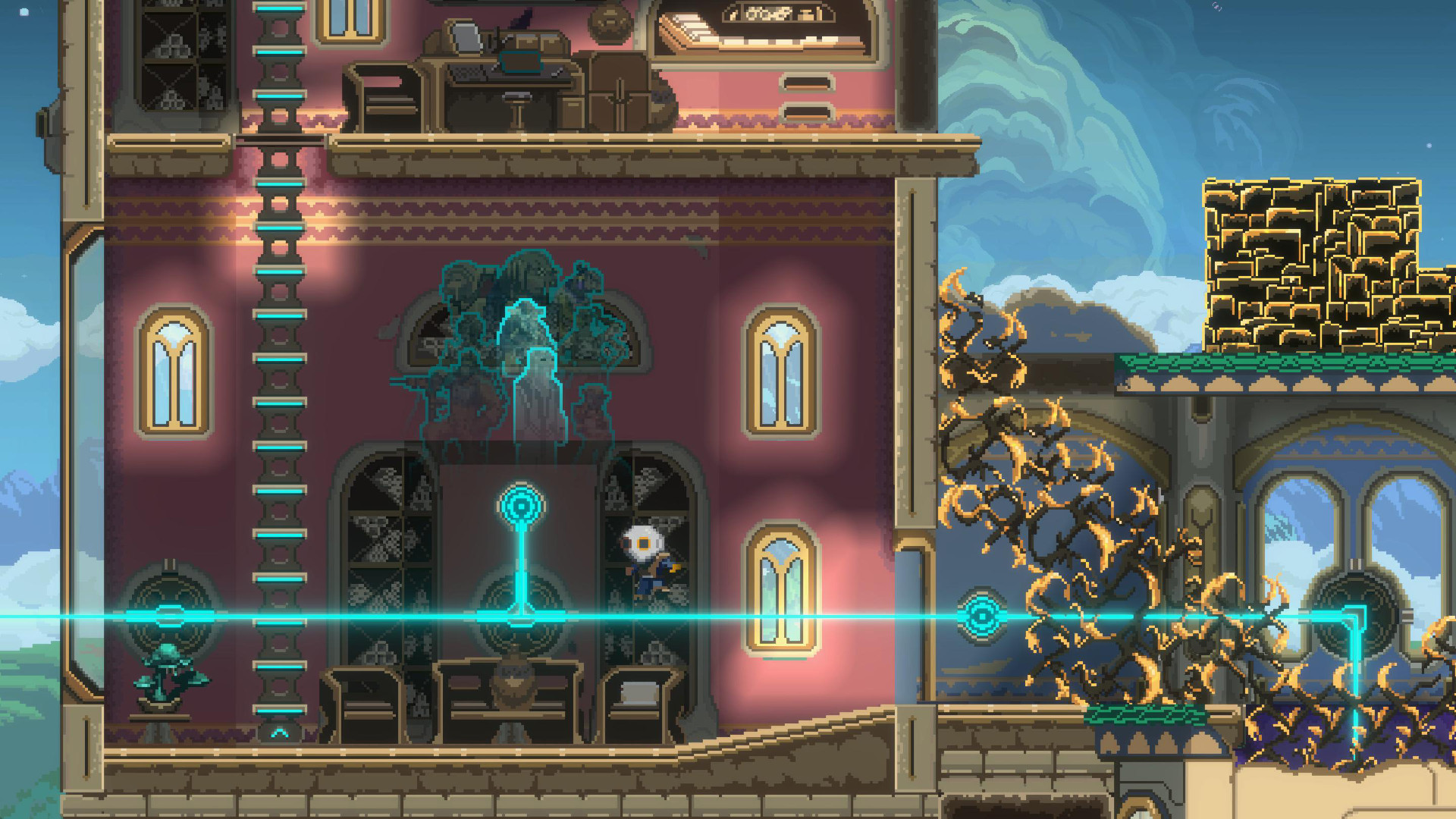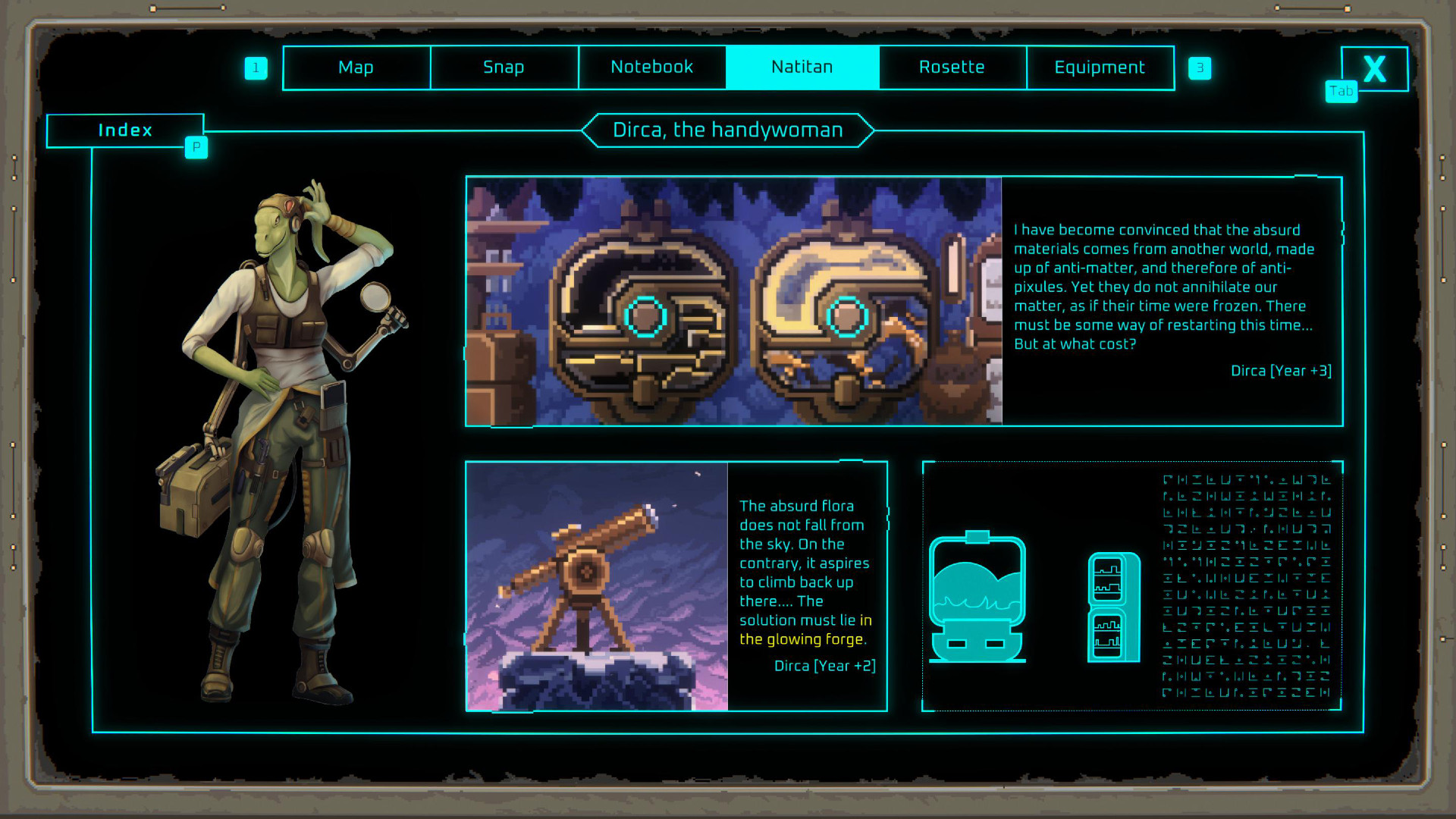While plenty of the best Metroidvania games such as Hollow Knight and Ori feature memorable combat, the defining feature of the genre remains that careful interweaving of exploration and upgrades. Following recent successes such as Animal Well comes Exographer, a new puzzler and platformer based heavily on real-world science. We at PCGamesN spoke to physicist and writer Raphaël Granier de Cassagnac and his studio SciFunGames about the inspirations for its upcoming game.
Exographer is a gorgeous new Metroidvania game that follows a rescue mission on an alien world inhabited by a race called the Natitans. As you explore, you’ll discover powerful upgrades – each rooted in real-world physics – and meet characters based on real-life historical scientists. Natitan radiation expert Rucie, for example, is inspired by pioneering physicist Marie Curie. In an email interview, I ask studio founder de Cassagnac, a nuclear and particle physicist known for his work at the Brookhaven and CERN research laboratories, how these inspirations extend to the powers you’ll discover and the ways in which they are used.
“In Exographer, there are no physical concepts that are not experimentally proven,” de Cassagnac tells me. Theoretical concepts such as string theory and extra dimensions are avoided in favor of proven physics. The sticky Gluon Boots, for example, are named for the particles that bind quarks together within the protons and neutrons of matter. Despite this, the team does not intend Exographer to come across as an ‘educational game’ – it’s very much a fun puzzler and platform game first and foremost. De Cassagnac cites Owlboy and Celeste as inspirations for the art direction, but notes that the team has also been playing the likes of Hollow Knight and Ori during Exographer’s production.
While you won’t need to understand these concepts to play, then, the powers do mimic various elementary interactions between particles. Another such example is the Photon Sphere ability: in the spirit of photons themselves, this tool allows you to attract or repel particles, letting you draw yourself to certain surfaces or push them away from you. “The combination of powers is rich, but it comes more from the gameplay than from physics.”
Another core function of Exographer is its photo-taking feature, which has you reveal invisible particles and clues to help solve various puzzles. Along with this, there’s also lore to be unlocked through your photo shoots. Going one step beyond the recent Prince of Persia: The Lost Crown, you can even use your pictures as checkpoints that you can fast-travel to at a later date. It also offers up a helpful manual checkpoint: “Your last picture, the one we call the ‘snap,’ is your unique safe point – and you will lose your progress when loading it. You only have one snap slot, but you can shoot [another] whenever you want.”
With six biomes to explore, you’ll want to revisit old areas as you unlock new abilities to discover additional places and pathways. You’ll also need to use your gray matter a bit; as de Cassagnac explains, “There is an analysis/puzzle element which is really more about logic. Players have to associate elementary particle interactions to the proper points in a sometimes elaborated particle reaction.” These more logic-driven puzzles are about “20-25% of the game,” he estimates, with the rest focused on “pure Metroidvania sequences.”

Fortunately, you won’t be tested in combat – although there’s still some potential peril. “Because the analysis phase might give a headache to some players, we are rather nice on the other elements,” de Cassagnac notes. “There are no fights, but that does not mean that you cannot die – your enemies are the four absurd materials that block your progression. You can be drawn in [by] one, or be crushed by another.” There is also the occasional timed puzzle, but the overall vibe is “a rather quiet game that you can enjoy at your own pace.”
While the focus is on real-world physics rather than science fiction, de Cassagnac says, “There is a lot of fantasy. All the quite serious physical concepts, like antiparticles or Feynman diagrams, are used to build up a world of marvels and wonders.” It’s a bit like putting axes and arrows in a game, but with elves and trolls instead of Vikings and Saxons,” he concludes with a laugh.
Despite Exographer being pitched as a fun puzzle platformer rather than an educational game, I ask whether SciFunGames hopes players will pick up an interest in real-world physics after seeing what’s on offer here. “It is indeed our goal! We strongly believe in the fact that one can learn while having fun,” de Cassagnac replies. “‘Science for all, fun above all’ is the motto of our studio. We want to reach an audience who has no prior interest in the sciences behind our game.”

“That is why we make science first wonderful, but also tamable,” he continues. “The idea is to first raise curiosity with tiny bits of knowledge: some vocabulary, beautiful images, key concepts. From there, if a fraction of players go beyond the game and reach out for additional and external information, the objective is reached!” As someone who grew up eagerly studying mathematics and physics, I’ll admit I already have somewhat of a predisposition towards what Exographer is offering, but I’m certainly looking forward to seeing more.
Along with its scientific background and an estimated 15 hours of adventure across its six biomes, Exographer also features a marvelous soundtrack from Stray and Cave Story composer Yann Van Der Cruyssen. There’s no fixed release date yet, but you can wishlist it on Steam to stay up to date with its development progress.
You might also want to test your logical thinking with some more of the best puzzle games on PC. Or, if you’re in the mood to try something a bit different, you’ll find plenty of fantastic options among the best indie games out in 2024.
You can also follow us on Google News for daily PC games news, reviews, and guides, or grab our PCGN deals tracker to net yourself some bargains.

